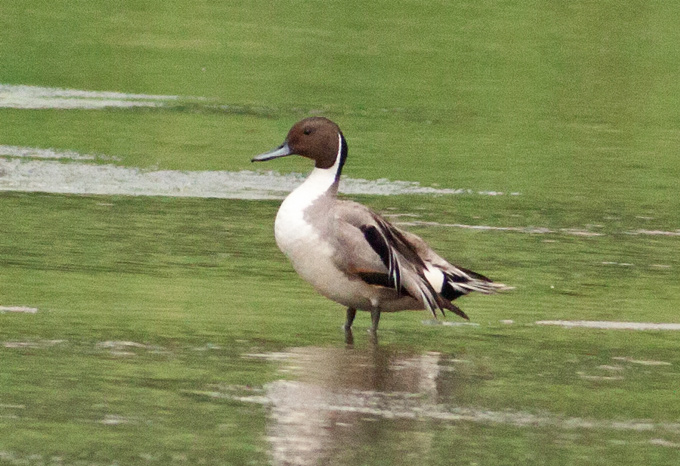 | E-mail to Birds Korea |
 | KWBS |
in the Region
 | The Oriental Bird Club |
 | BirdLife International (Asia) |
July
Hot (increasingly with overnight minima close to 25°C, and maxima of 35°C) and humid, with occasional storms and heavy rains associated at the beginning of the month with the seasonal rain-front and by the end of the month with typhoons.
Young Japanese and White Wagtails can be found begging food on streams and rivers in the east and southeast. Juvenile Chinese Egrets and Far Eastern Oystercatchers are on northwest tidal-flats, in some areas feeding alongside juvenile Saunders’s and Mongolian Gulls. Black-naped Orioles, Vinous-throated Parrotbills and parties of tits, are found in almost all woodland areas. Towards the end of July the first returning shorebird flocks arrive, with large numbers of Far Eastern and Eurasian Curlews at Ganghwa and the Geum Estuary.
“Southern breeders” in recent years have included Pheasant-tailed Jacana, White-breasted Waterhen and Greater Painted Snipe. In 2006 an early typhoon brought Korea’s first Bridled Tern, to Jeju Island.
Seorak Mountain, July 31
As part of research both for Birds Korea’s report (Status of Birds, 2014) and a report on the conservation of forest birds in Gangwon Province with the Hanns Seidel Foundation, a day was spent on Seorak Mountain. We hiked the narrow trail from Hangyerang Services (at about 820masl) up past the shelter below Daecheongbong, through predominantly deciduous woodland, then mixed woodland, into the subalpine zone (from about 1500masl), with its waist-high shrubbery and conifers, including cone-laden Korean Pines.
On the route up, all birds heard or seen were logged by NM (irrespective of distance), with a few additional observations made only by JL and / or HJM. Starting at 5AM and finishing after 9PM (at least for two of the team!), this extremely arduous hike started in warm and humid conditions, with low cloud. Fortunately, the weather cleared for several hours in the afternoon at the peak, before deteriorating rapidly, with thunderstorms bringing heavy rain for two hours during the descent.
In all, 37 species were seen or heard along the trail. While most of the species, like Spotted Nutcracker, Radde’s Warbler and Siberian Rubythroat were expected (thanks to research by the Korea National Parks), there were several surprising finds. These included an absence of Brown-eared Bulbul and Oriental Turtle Dove; a high number of singing Two-barred Warbler (c. 19 logged, with most between 1100masl and 1250masl); two presumed Eurasian Sparrowhawk and a single male-type Red-flanked Bluetail (both seen by JL); and an unseen locustella heard calling (perhaps an early migrant?), a probable Eurasian Woodcock, and even more surprising a Japanese Robin, logged only by NM.
As there are so few details in the Birds Korea archives of bird distribution and abundance on high mountains, the species are listed in the order in which we encountered them, divided broadly into three main zones (as indicated by signage along the trail).Details are approximate only. The trails rise and fall along their length; some birds were heard only (and could have been higher or lower than the trail); and our team was sometimes split up.
Section 1: 850m-1350m; length c. 4.1km; c. 0500-1000hrs
Very steep ascent (and descents!) through occasionally tall closed-canopy deciduous forest with a few conifers admixed.
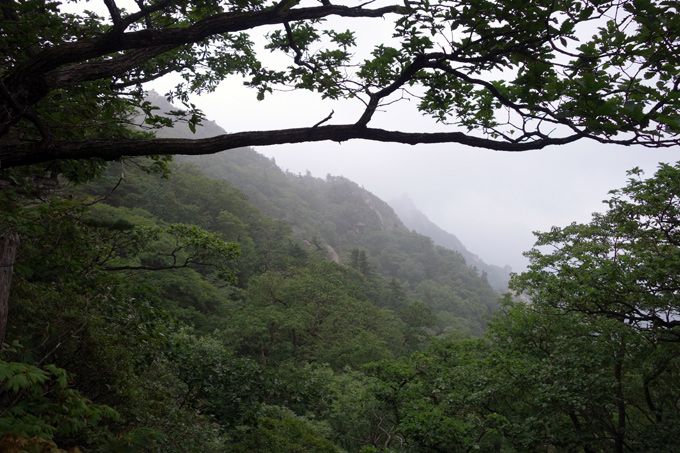
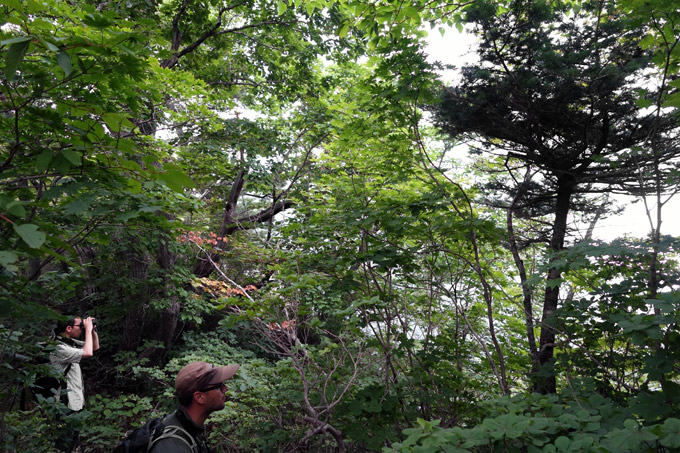
- Pale Thrush Turdus pallidus, 10
- Pale-legged Leaf Warbler Phylloscopus tenellipes, 15 (most heard calling only; though a harsher version of the typical song was also heard 1-2 times)
- Hazel Grouse Tetrastes bonasia, 1 (heard only)
- Grey Wagtail Motacilla cinerea, 2
- Eurasian Nuthatch Sitta europaea, 16
- Yellow-throated Bunting Emberiza elegans, 5
- Pallas’s Leaf Warbler Phylloscopus proregulus, 3 (heard in song)
- Eastern Great Tit Parus minor, 1
- Long-tailed Tit Aegithalos caudatus, 4 (all birds that were seen were magnus)
- Varied Tit Sittiparus varius, 11
- Large-billed Crow Corvus macrorhynchos, 2
- Two-barred Warbler Phylloscopus plumbeitarsus, 16 (the majority were heard in song, with two or more also heard calling. At one location four or five were singing vigorously “at each other”, allowing decent views of two individuals. Although we were aware that the species had been recorded here in the summer months at least once before, we had not expected it to form such a strong component of the avifauna and the soundscape. As Tomek [2002] includes records from the end of May and early June and again in early August in the DPRK part of Gangwon Province as well as in several other DPRK provinces, it must be assumed this this species is a locally common summer visitor to forest above c. 1100m in this part of Korea, and northward)
- Eurasian Wren Troglodytes troglodytes, 3
- Siberian Blue Robin Larvivora cyane, 1
- Asian Stubtail Urosphena squameiceps, 2
- Japanese Pygmy Woodpecker Dendrocopos kizuki, 4 (all birds seen appeared quite pale on the underparts)
- Eurasian Jay Garrulus glandarius, 1
- Tristram’s Bunting Emberiza tristrami, 1+ (one seen and perhaps up to 2-3 heard)
- Coal Tit Periparus ater, 3
- Eurasian Treecreeper Certhia familiaris, 1 (seen, JL only)
- Common Pheasant Phasianus colchicus, 1 (heard only “down below”).
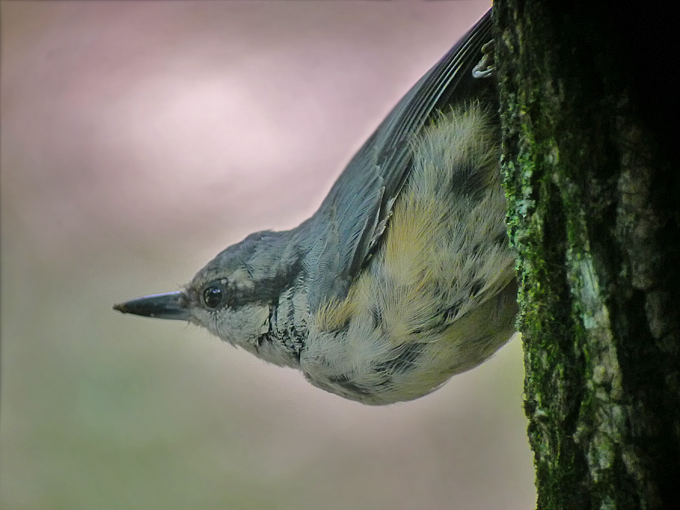
Section Two: 1350m-1500m; c. 3km; c. 1000-1300hrs
Moderately steep ascent, with mixed forest and often dense undergrowth, including patchy stands of dwarf bamboo.
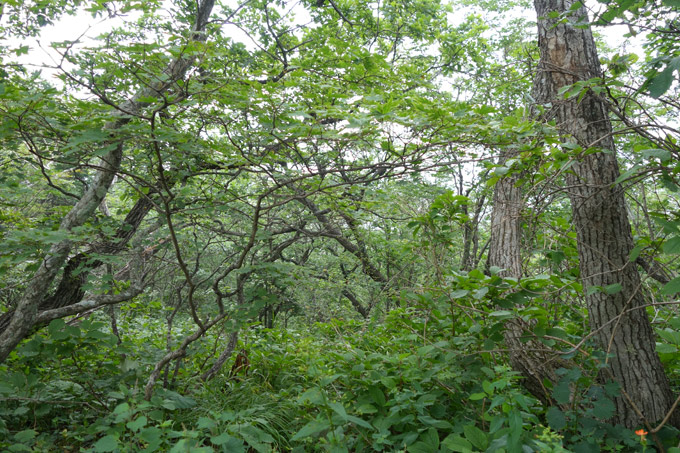
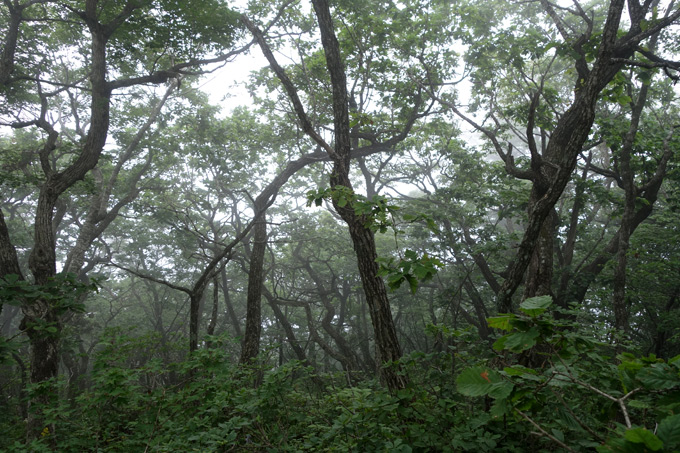
- Pallas’s Leaf Warbler Phylloscopus proregulus, 8 (most singing, with one or two seen)
- Pale-legged Leaf Warbler Phylloscopus tenellipes, 11
- Coal Tit Periparus ater, 13 (including one juvenile with strong yellowish tones to the “cheeks”)
- Tristram’s Bunting Emberiza tristrami, 2
- Two-barred Warbler Phylloscopus plumbeitarsus, 3
- White-backed Woodpecker Dendrocopos leucotos, 1
- Japanese Pygmy Woodpecker Dendrocopos kizuki, 2
- Eurasian Nuthatch Sitta europaea, 6
- Eurasian Treecreeper Certhia familiaris, 1 (seen and heard)
- Marsh Tit Poecile palustris, 4
- Asian Brown Flycatcher Muscicapa latirostris, 1
- Pale-legged Leaf Warbler Phylloscopus tenellipes, 8
- Asian Stubtail Urosphena squameiceps, 1
- Pale Thrush Turdus pallidus, 6
- Varied Tit Sittiparus varius, 7
- Yellow-throated Bunting Emberiza elegans, 1
- Large-billed Crow Corvus macrorhynchos, 1
- Eastern Crowned Warbler Phylloscopus coronatus, 1 (heard only)
- Eurasian Jay Garrulus glandarius, 1
- Eurasian Wren Troglodytes troglodytes, 1
- Spotted Nutcracker Nucifraga caryocatactes, 4
- White-throated Needletail Hirundapus caudacutus, 2
- Red-flanked Bluetail Tarsiger cyanurus, 1 (seen only by JL, at close range in a rainstorm during the hike down. This individual showed blue on the wings and tail, so is likely to have been a Second Calendar-year male or an autumn adult male. There are no previous summer-month records for the ROK in the Birds Korea archives. Tomek [2002] states that this species breeds in the northern provinces of the DPRK, but is only a migrant further south. However, the date is far outside of the expected migration period of this species, which is given as “from the beginning of September” in the DPRK [Tomek 2002], and October in Japan [Brazil 1991]. The date and habitat-type fall within expected parameters given for breeding birds in Japan by Brazil [1991], with the altitude of the record on Seorak similar to the 1300m recorded on Mt. Iide in Niigata Prefecture, in northern Honshu, also lying close to 38 Degrees North. There are substantial areas of forested mountain at and above 1300m in Gangwon Province. It seems possible, therefore, that this species might eventually prove to be regular in this area in the summer months.)
- Eurasian Woodcock Scolopax rusticola, 1? (brief views of one seen in flight by NM at the start of a heavy rainstorm. Although identification was immediate as this species, viewing conditions were very poor and there is perhaps only one summer-month record known to Birds Korea [one photographed in Ansan in July 2011]. Tomek [1999] considered the species to be a “species rarely encountered during migrations” in the DPRK, but nonetheless included several records in May, a month in which birds are already back on the breeding grounds in Japan [Brazil 1999].
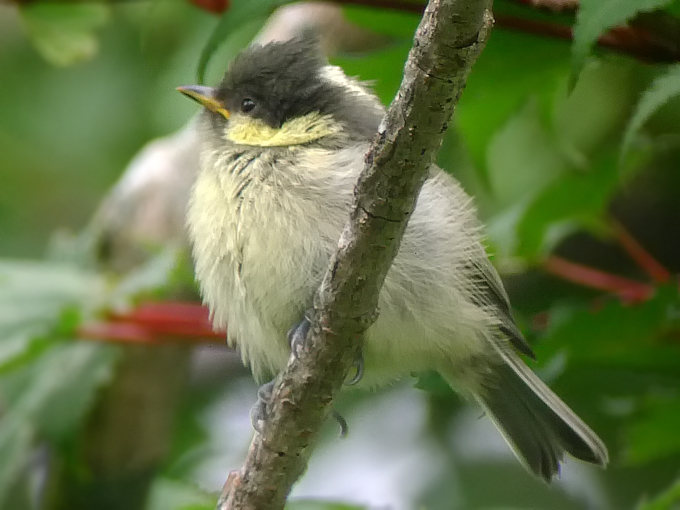
Section Three: 1500m-1650m; c. 2km; between c. 1230-1500hrs
Vegetation predominantly waist or head-high, with a few taller coniferous trees.
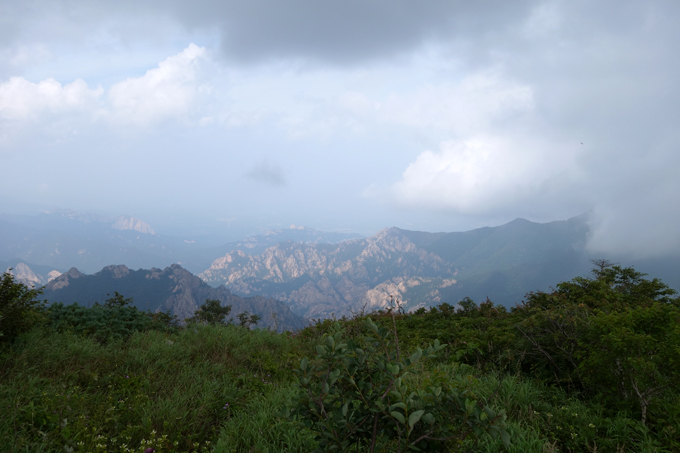
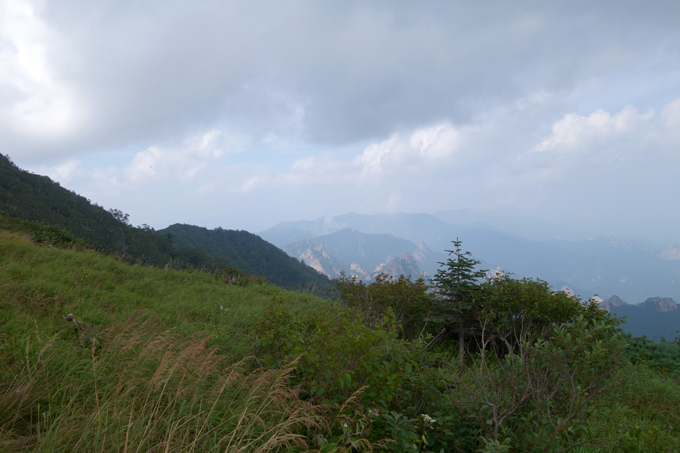
- Dusky Warbler Phylloscopus fuscatus, 2 (heard in song only)
- Japanese Robin Larvivora akahige, 1 (One, probably a female, was seen briefly and poorly as it moved through undergrowth next to the trail by NM. Identification was based on e.g. the bird’s size and structure; its warm-coloured tail, which was frequently raised and lowered; and its orangey head and breast, lacking any obvious grey or dark. This species has not been recorded previously in the summer months in the ROK. There were only three records in the DPRK up to 2006, with two records in April and one in early June in the far north [Duckworth 2006]. It is worth noting that this species can be extremely difficult to observe and is a summer visitor to large parts of Japan, including at latitudes south of Gangwon Province. According to Brazil [1991], the species “inhabits evergreen, mixed or deciduous forests with dense undergrowth from 1,000-2,500m (chiefly around 1,300-2,100m in central Honshu and Shikoku)…Breeding occurs from late May to mid July” and the species remains on breeding grounds until at least “late August”.)
- Spotted Nutcracker Nucifraga caryocatactes, c., 12
- Eurasian Sparrowhawk Accipiter nisus, 2 (One male and one female, both believed to be this species, were seen by JL, with one even dive-bombing a group of feeding Nutcrackers.)
- Long-tailed Tit Aegithalos caudatus, 6
- Pallas’s Leaf Warbler Phylloscopus proregulus, 1
- Marsh Tit Poecile palustris, 2
- White-throated Needletail Hirundapus caudacutus, One
- Daurian Redstart Phoenicurus auroreus 3
- Locustella sp. 1 (contact / anxiety call heard by NM only)
- Radde’s Warbler Phylloscopus schwarzi, 4+ (heard in song)
- Tristram’s Bunting Emberiza tristrami, 1 (adult female)
- Yellow-throated Bunting Emberiza elegans, 1
- Bull-headed Shrike Lanius bucephalus, 1
- Siberian Rubythroat Calliope calliope, c.3 (heard only, in song)
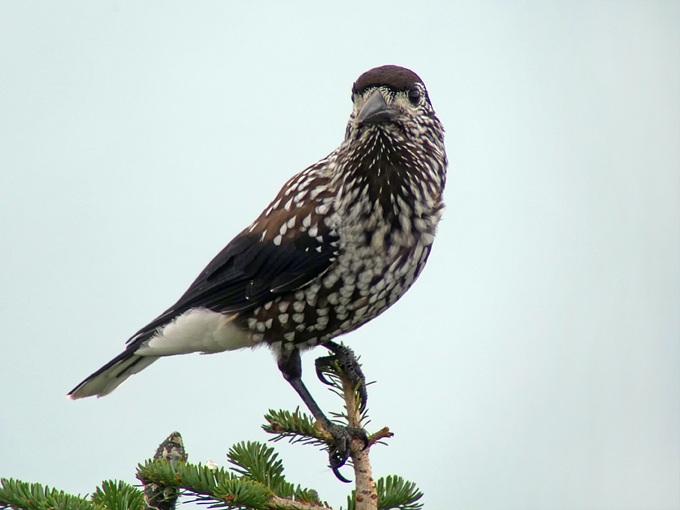
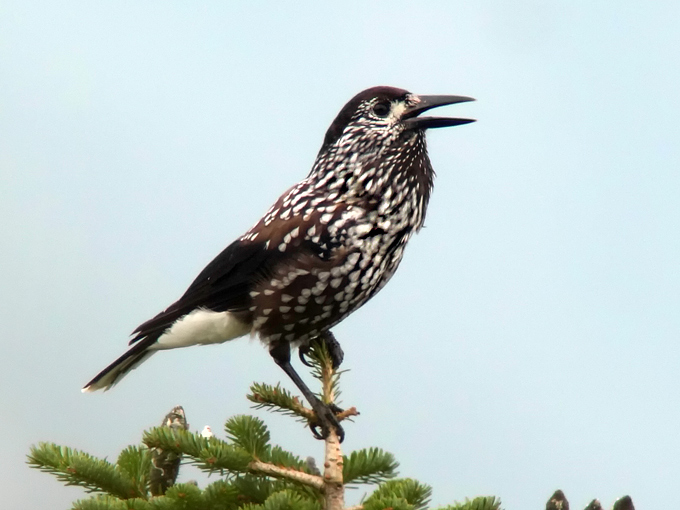
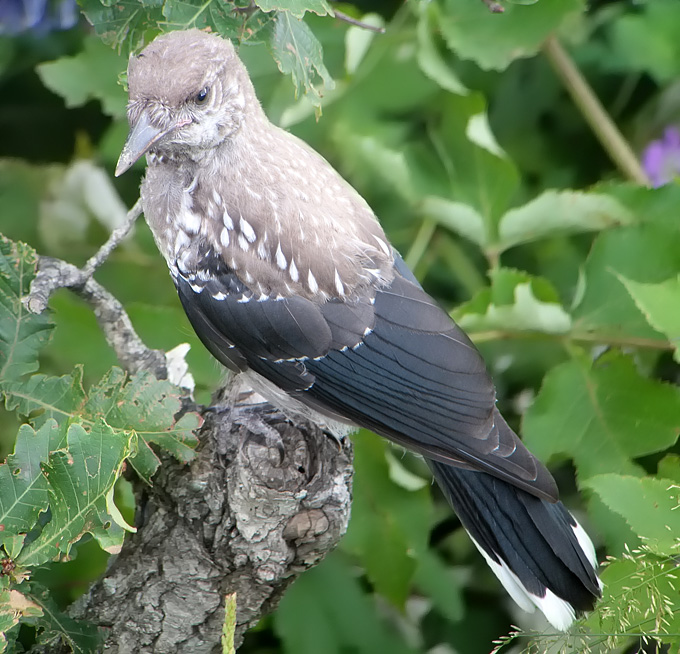
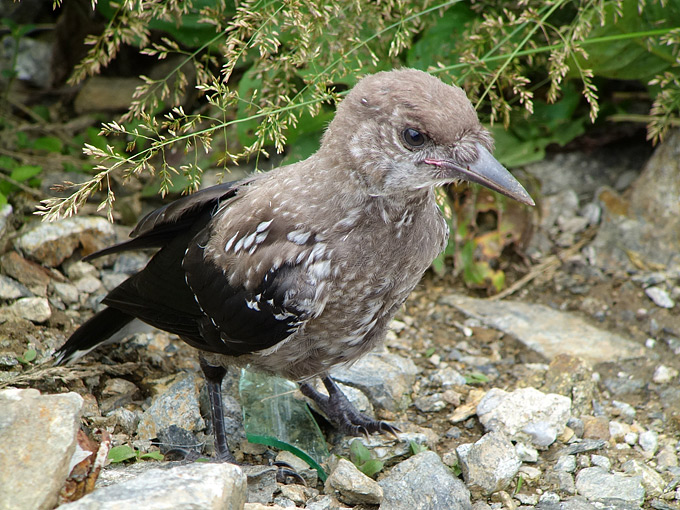
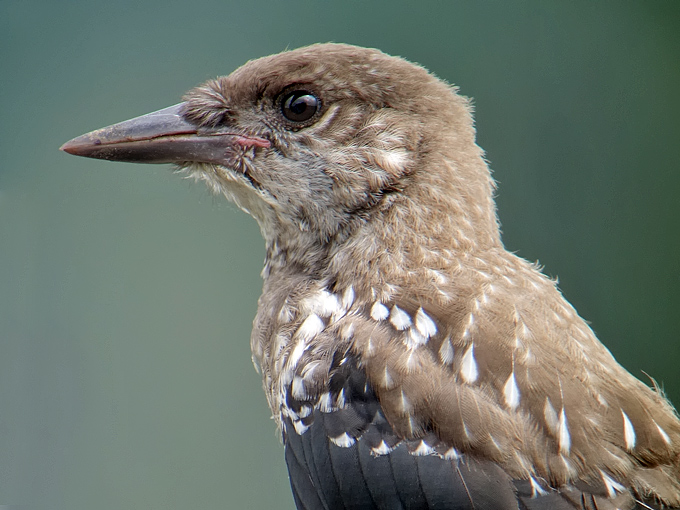
References
- Brazil, M. 1991. The Birds of Japan. Published by Helm.
- Duckworth, J.W. 2006. Records of some bird species hitherto rarely found in DPR Korea. Bull. British Ornithologists’ Club. 2006 126 (4) 253-290.
- Tomek, T. 1999-2002. The birds of North Korea. Acta Zoologica Cracoviensia 42: 1-217; 45: 1-235 (in English).
Song Do, July 27 & August 3
A surprising number of shorebirds were back at Songdo mudflats on 27 July. Subsequent visits over the next few dates to Gojan high tide roost revealed very variable numbers, indicating that the reclamation activities are probably affecting numbers as they find alternative roost sites in the area. Nearly all birds are in varying stages of summer (breeding) plumage.
- Eastern Oystercatcher (5, local breeders)
- Black-winged Stilt (3 on Namdong Reservoir on 3 Aug, maybe also local breeders)
- Grey Plover (250)
- Little Ringed Plover (1 at Namdong Reservoir on 3 Aug, local breeder)
- Mongolian Plover (250 on 27 July, very few seen thereafter, so maybe they moved on quickly)
- Black-tailed Godwit (150, maybe more, mixed with Bar-taileds)
- Bar-tailed Godwit (300)
- Whimbrel (at least 20, probably more)
- Eurasian Curlew (150)
- Far-Eastern Curlew (150)
- Spotted Redshank (1)
- Common Redshank (5)
- Marsh Sandpiper (1)
- Common Greenshank (At least 800, probably 1,000 on 27 July, but few after that, except 420 at Namdong Reservoir on 3 August, so I guess good numbers are still in the area)
- Terek Sandpiper (620 counted on 3 Aug: late July- early August is typically the peak time for this species)
- Common Sandpiper (2)
- Ruddy Turnstone (10)
- Great Knot (30)
- Red Knot (1-2)
- Red-necked Stint (50)
- Broad-billed Sandpiper (3)
- Dunlin (100)
- Saunders’s Gull (85 young birds out of 190 present on 27 July indicates a good breeding season locally, a change from last year when very few young birds were seen)
Tancheon & Seongnae, July 26
The Tan stream, another tributary of the Han River, is rather high due to recent rains. From Suseo-Dong to the mouth at Samseong-Dong (a stretch of about 5km- a fraction of the streams total length), the following seemed of interest:
- Mallard Anas platyrhynchos. 58 in total, including a mother with eight juveniles (nr. the Gwangpyeong-ro bridge) and a second mother with four (under the Dogok-ro bridge).
- Common Merganser Mergus merganser. Two eclipse males (distinguishable from the similar females - according to my field guide - by the great extent of white on the closed wing and also the paler underparts). Both were in moult, lacking primaries, and presumably flightless. Another rare summer record for Seoul.
- Common Sandpiper Actitis hypoleucos. Five. The post-breeding dispersal / return migration starts early (two weeks ago they were nowhere to be seen).
Later on the canal at Seongnae-Dong:
- Mallard Anas platyrhynchos. Six. It is worth noting that it was here I previously found a family brood on July 8th 2006 (see latest bird news for that date) - which is actually the first known case of breeding for the ROK.
- Common Moorhen Gallinula chloropus. Two shyly keeping near cover.
- Eurasian Hobby Falco subbuteo. One winging its way over the skyscrapers was a real inner-city record.
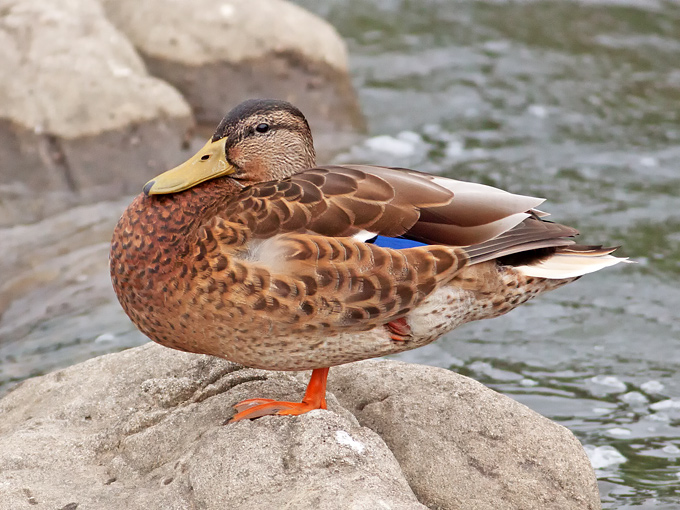
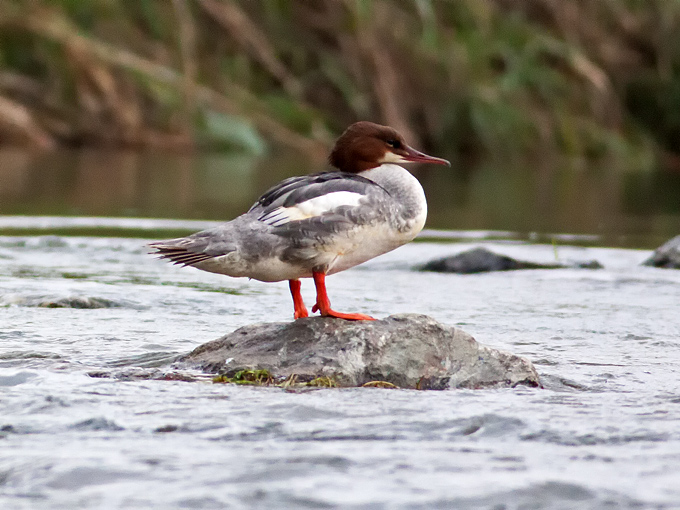
“The southeast”, July 13
July is widely understood to be the hardest / quietest month for birding here. The weather is often hot and humid, or outright wet in years with a proper rainy season; there is almost no obvious migration; there are almost no accessible large concentrations of birds; there has been a near-absence of “good finds” in July - unlike all 11 other months of the year- unless as a result of typhoons; and finally, although biting insects are obvious, many bird species are shy and in increasingly poor plumage. Despite all these negatives, a day of birding riverside fields and reed-beds, rocky coast and open sea in the southeast (in Gyeongju, Pohang, the Guryongpo Peninsula and near Ulsan; first in rain and fog and then under clearing skies) was full of interest. In all only 46 species were logged, though much times was effectively wasted taking a so-called “Whale Watching Tour” out of Ulsan (more on this in a separate post). However, this low total included many notable species:
- Gadwall Anas strepera. Three were found (and photographed) near Pohang. There are very few previous summer-month records of this species in the ROK (though with better coverage this summer, the species has been found in both Seosan and in Seoul in June).
- Mallard Anas platyrhynchos. Four were found near Pohang. Although increasingly regularly- recorded in the summer months in the north and northwest, and also found as an occasional breeder (?) at Upo, this species is scarce in the south at this time of year.
- Common Merganser Mergus merganser. One near Pohang. Although a local breeding species in the north of the country, this is perhaps the first summer record in the southeast known to Birds Korea.
- Streaked Shearwater Calonectris leucomelas. Probably c. 150 were seen in total, including several small groups off the Guryongpo Peninsula and 117 seen during the so-called “Whale Watching Tour” out from Ulsan, the nation’s whale-eating capital.
- Yellow Bittern. Ixobrychus sinensis At least three (two booming males and one female) were seen near Gyeongju.
- Great Cormorant Phalacrocorax carbo. Around 50 were seen near Pohang. Although easy to separate from Temminck’s Cormorant in non-breeding plumage by the colour of the lower mandible and the shape of the rear of the gular patch, the criteria for separating sinensis and (the perhaps synonymous?) hanedae still seem to be poorly understood. Sinensis, often thought of as the Great Cormorant of the interior of Eurasia (as opposed to the marine-preferential nominate subspecies), is widely believed to be the common subspecies in Korea. It is mapped across Asia by e.g. Newson et al. (2004) - though their study omitted Korea and Japan from their analysis – and by Brazil (2009). Hanedae is less well-known. According to the 7th edition of the Japanese Checklist published by the Ornithological Society of Japan in 2012, only hanedae has been recorded in Japan. Brazil (2009) provides no ID criteria, instead stating that hanedae is “mainly resident” in Japan but “may disperse” and that the “limits” between the two subspecies are “unclear”. Either way, there is evidence of large seasonal movements of Great Cormorants within Japan , where the species is increasing rapidly, and large numbers winter in the Nakdong Estuary in the southeast of Korea, only 200km from mainland Japan. In addition, the species was largely absent in the ROK in summer until the late 1990s, since when it has established several breeding colonies, but only in the northwest. In winter, there appear to be subtle differences in the shape of the gular between some birds when seen side-by-side (either “expected” variation or could this be due to subspecific differences?); and only in a very few areas, like Jeju (where there are several “Japanese-type” taxa), the species can be found regularly in rocky and marine areas. The birds at Pohang were on a river. They were in non-breeding plumage and most were immature. In many respects they looked remarkably similar to hanedae photographed by NM at a breeding colony in Tokyo (in early 2005). Sinesis or hanedae? Informed comments would be greatly appreciated.
- Temminck’s Cormorant Phalacrocorax capillatus. One was on the Guryongpo Peninsula. Although this species breeds commonly in the northwest and locally elsewhere in the Korean part of the Yellow Sea, it is apparently scarce in the summer months in the southeast.
- Ruddy-breasted Crake Porzana fusca. One was heard near Gyeongju.
- Watercock Gallicrex cinerea. Near Gyeongju, a female Watercock-type was seen as it flew across the track and disappeared into heavy cover.
- Grey-headed Lapwing Vanellus cinereus. The day’s highlight, an adult Grey-headed Lapwing, was found by JL, and photographed by both of us in rice-fields near Gyeongju. This species is a very uncommon migrant through Korea, with very few records in the summer months (<5 in total?). Of note, one was also reported in the Nakdong Estuary in mid-June this year.
- Common Redshank Tringa totanus. One, presumably an early-returning migrant, was near Pohang.
- Black-tailed Gull Larus crassirostris. At least 400+ were noted during the day, including a half-dozen or more superb fresh-plumaged juveniles and large numbers of extremely worn-looking adults.
- Mongolian Gull Larus mongolicus. A worn (sub-) adult was between Ulsan and Busan and was the only non-Black-tailed gull seen during the day. In addition to wear, it had a few coarse nape streaks (hard to see in the images). In this species, nape-streaking appears to be at its coarsest and most extensive in August / September, becoming weaker (and still confined to the nape) during much of the winter.
- Ancient Murrelet Synthliboramphus antiquus. One in non-breeding plumage off the Guryongpo Peninsula appears to be an exceptional July record away from breeding areas (many / most apparently depart Korean waters between mid-June and October).
- Light-vented Bulbul Pycnonotus sinensis. JL found a family party on the Guryongpo Peninsula on the 12th. Together, we heard single birds in two additional villages; heard and saw the same family in the same area; saw another perched on roadside wires next to the “known site”; and encountered singles at two more spots from the moving car between Guryongpo and Ulsan. Clearly, the species has already established itself on several offshore islands in the West Sea; it is now colonizing the mainland in the southeast. How many more might there be on islands and along the south coast too?
- White Wagtail Motacilla alba. In addition to at least two family groups of leucopsis, a single First-summer / Second Calendar-year male lugens was found and photographed on the Guryongpo Peninsula. Although lugens is a common winter visitor and migrant, and has apparently been recorded in the summer in the DPRK, the Birds Korea 2014 Checklist does not acknowledge any summer month records in the ROK. Is it regular here in the summer, perhaps along the Gangwon coast as seems likely, or was this a genuinely exceptional record?
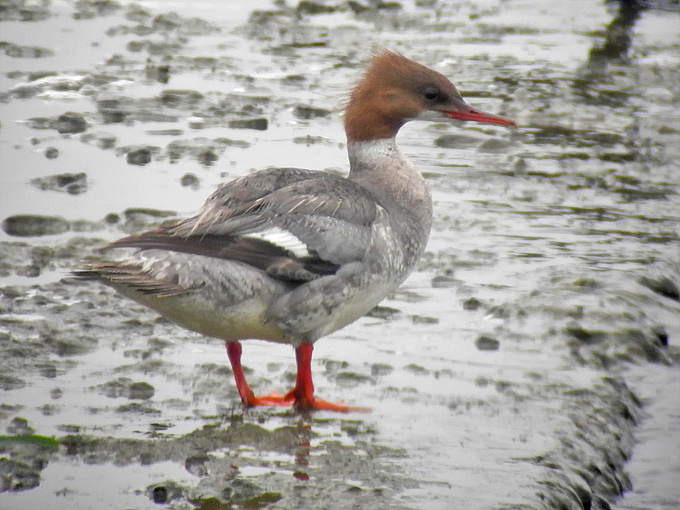
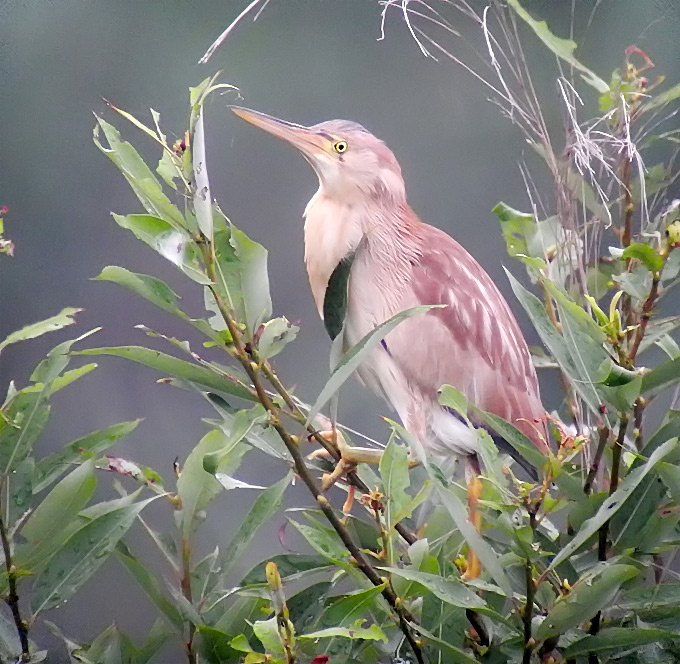
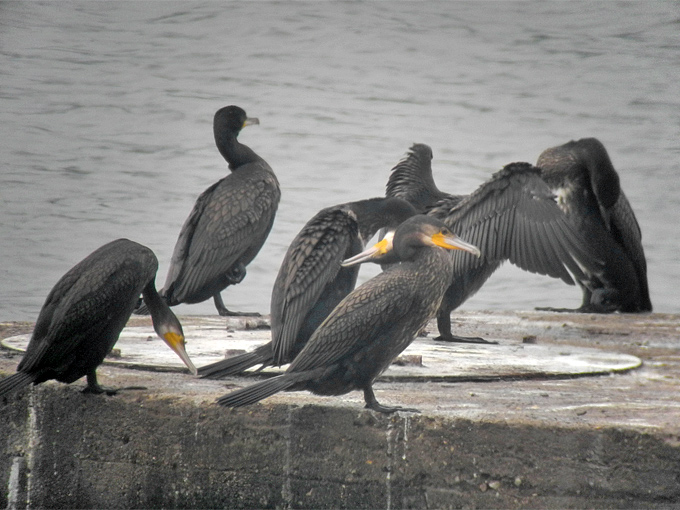
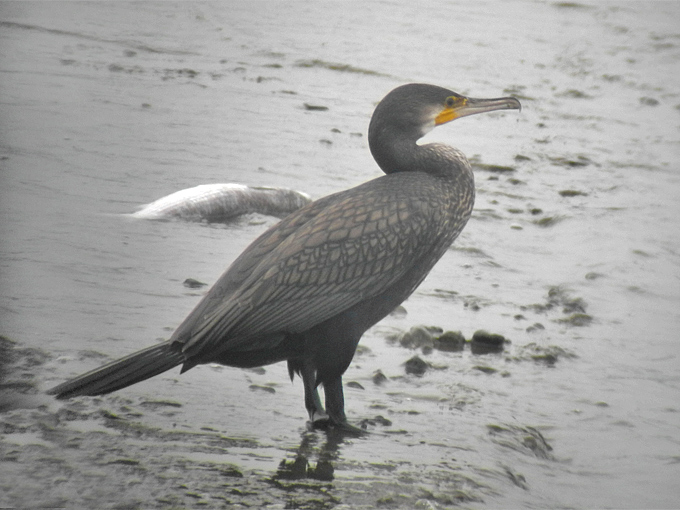
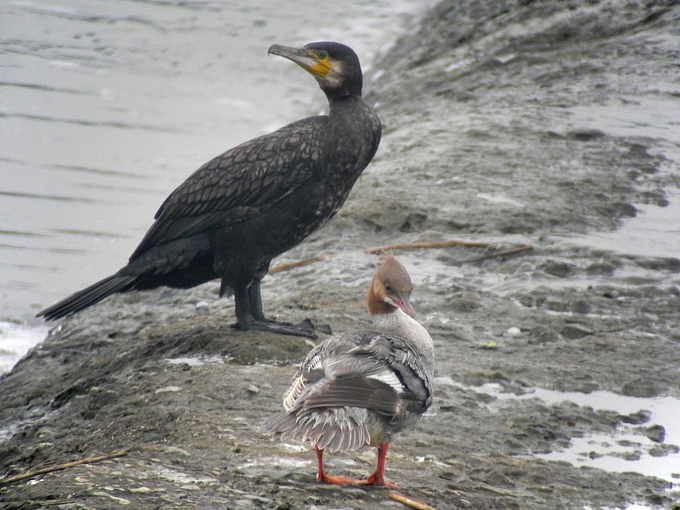
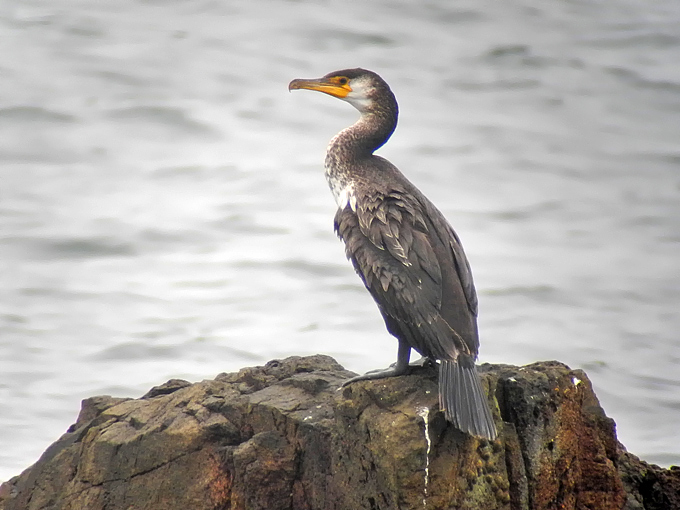
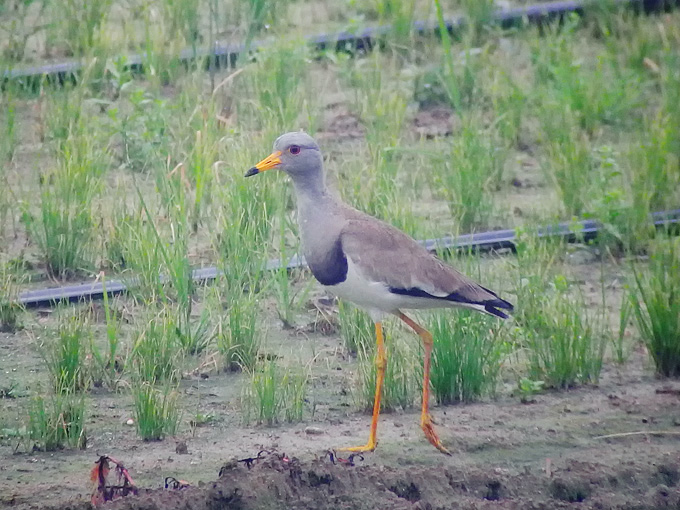
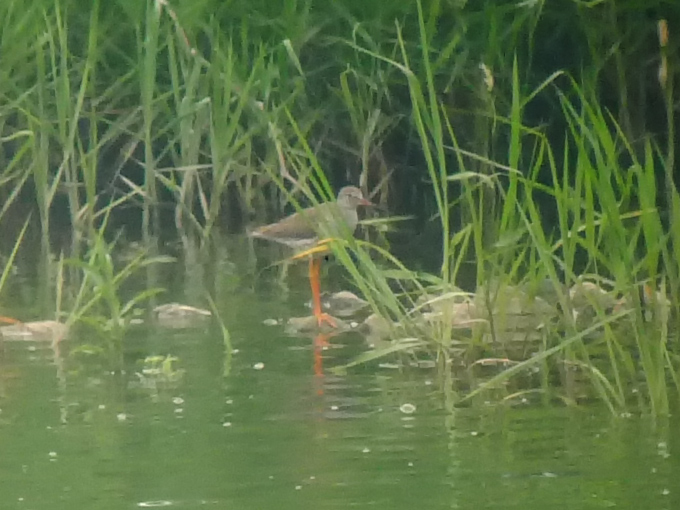
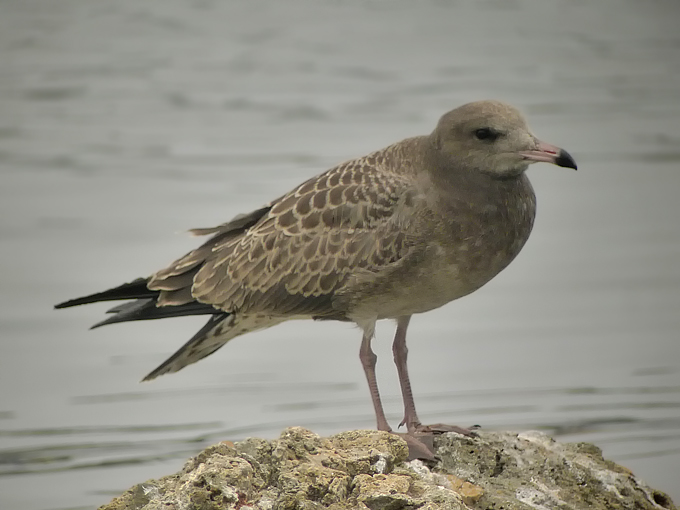
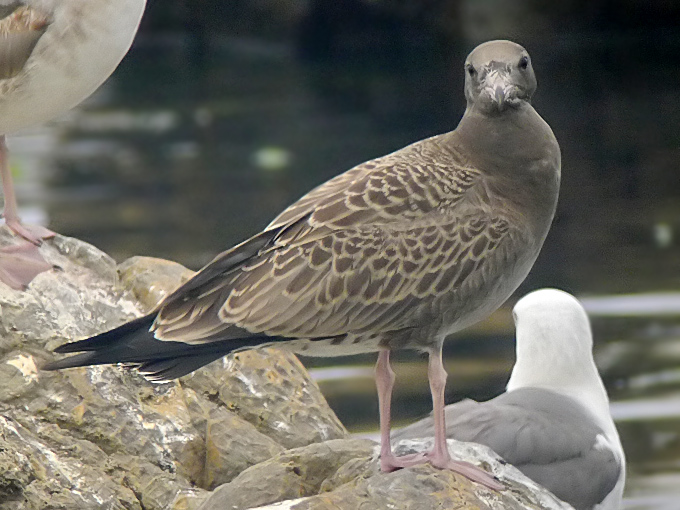
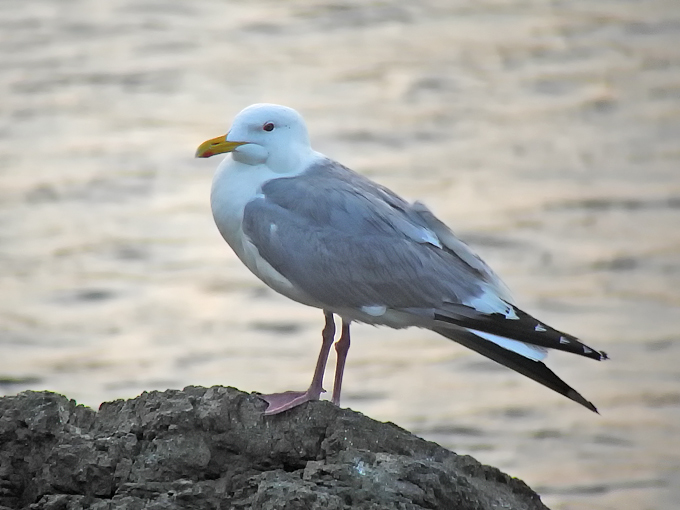
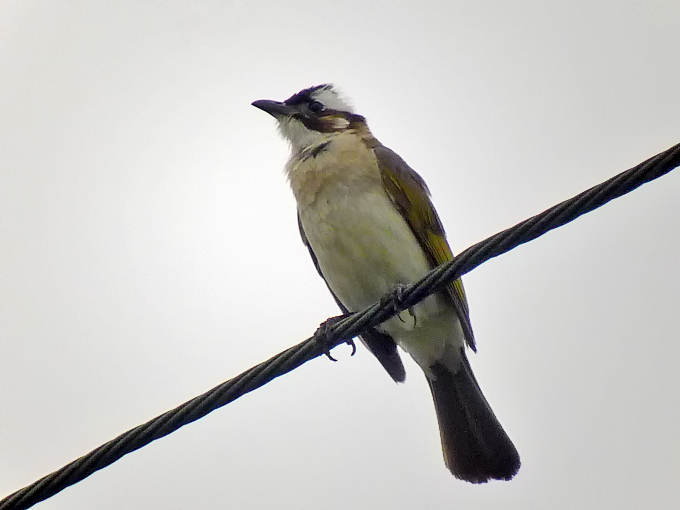
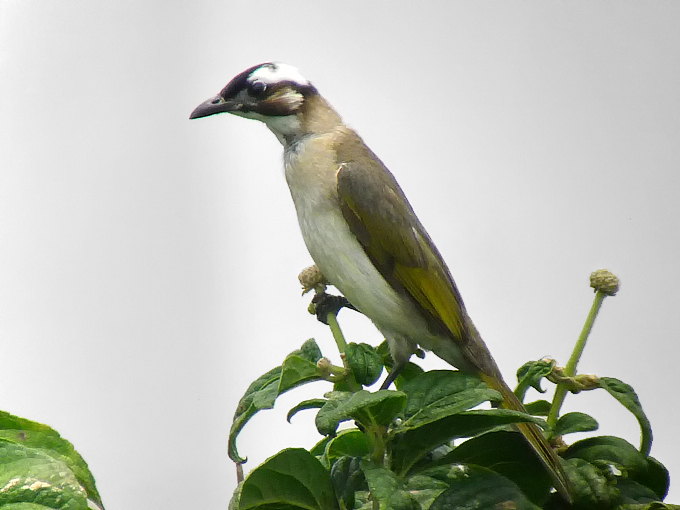
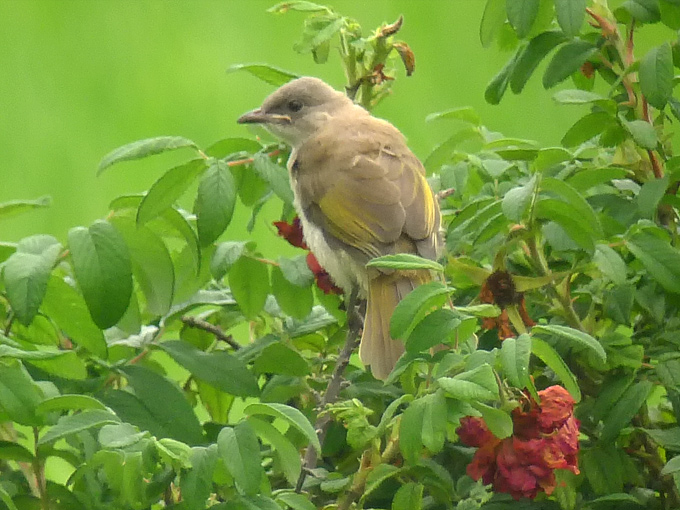
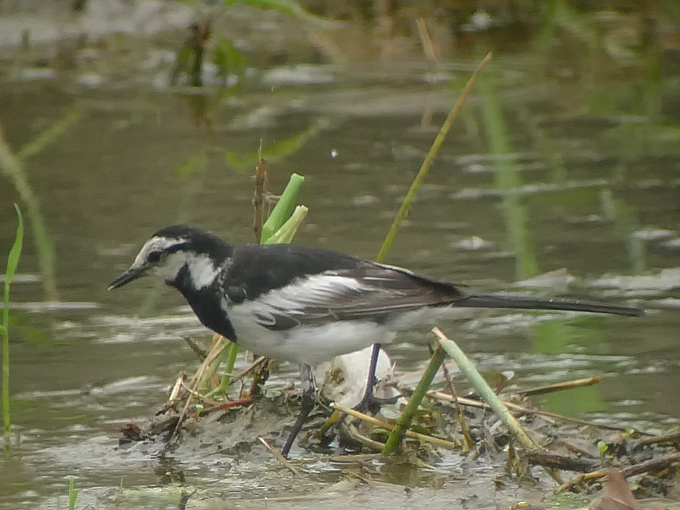
Also seen a Tiger Keelback Snake.
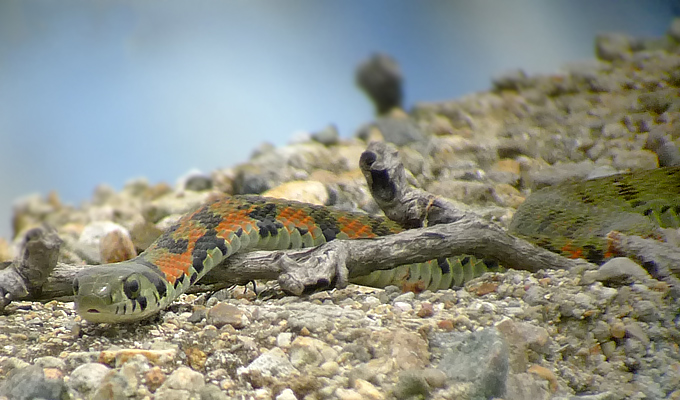
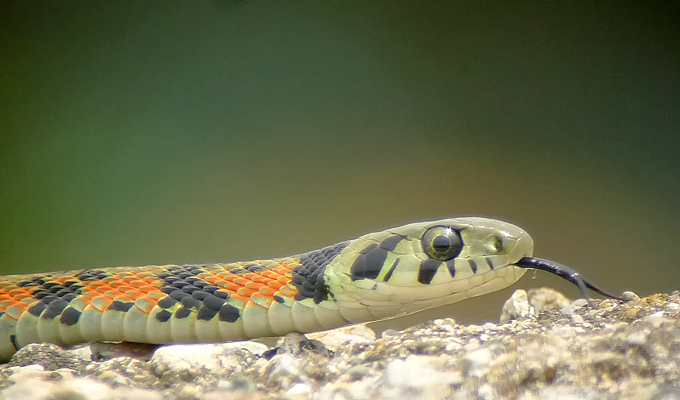
Yongjeong Island, July 12
At a construction site for the planned new runway, an opportunistic Saunders's Gull colony has been active recently (via SKS). A parent was photographed feeding a well-grown chick here on July 2nd (OSH).
Today little activity remained, although one adult was fetching and carrying food to the general nesting area, which also circled me once overhead, screaming angrily. I also saw two distant adults on the ground, which may have been tending nests or young.
A Little Tern also flew to and from the breeding area (nests and chicks were reported here a month ago). Also present, a Hobby, a few Zitting Cisticola and a Meadow Bunting.
Yongjeong is losing its last areas of wild habitat to development. Picture A (below) shows the most valuable wetland a year ago: picture B shows the same area today.
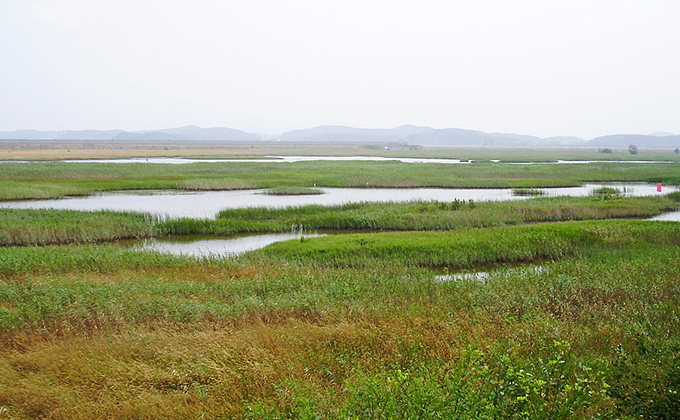
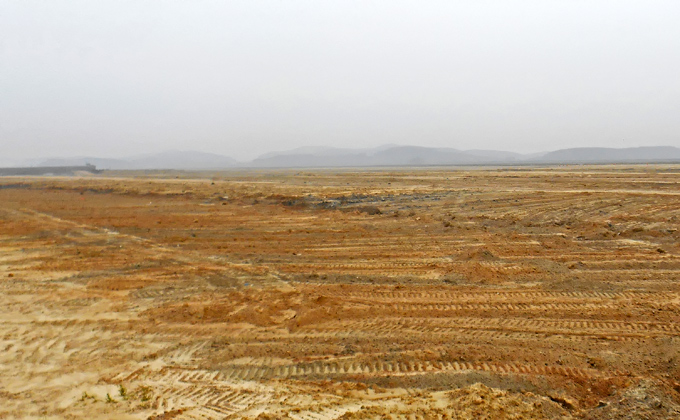
Sorae Marsh Ecological Park, Incheon, June 1 - 17
During the period of the 1st to the 17th of June 2014 I visited the Sorae Marsh Ecological Park in Incheon almost daily for birdwatching and photography. I had easy access to the park as my wife's parents conveniently live a two minute walk from the East Gate. The park contains a mixture of salt marsh, mudflats, fresh and brackish wetlands providing habitat for a variety of bird species. The main walking/cycling track around the edge of the park is raised above the surrounding mudflats and tidal water enters through a gate on the eastern side. The main track is busy with people at times but the well made tracks through the park exclude bicycles and have minimal foot-traffic. Raised boardwalks provide access across the brackish lagoons and there are plenty of small shelters with seats to have a break. Unfortunately the bird hides are mostly poorly positioned. The Observation Deck within the freshwater wetland sits too low to be of any benefit for birdwatching. Toilets are located at the large three storey visitor centre in the south-western corner of the park. The view from the top deck provides a good outlook over the park and surrounding areas.
Constantly calling Oriental Reed Warbler were common within dense reeds and it was in these areas that Yellow Bittern were also quite common. When a bittern entered into the territory of a reed warbler they were more often than not aggressively chased away by the smaller bird. While trying to photograph Yellow Bittern in flight on the 3rd I inadvertently photographed a male Von Schrenck's Bittern. I was to see this species a few more times during my visits including a male on the 9th calling out in the open along a track on the northern side. Common Moorhen were also heard and sometimes seen crossing the tracks in this habitat. A single male Watercock in breeding plumage was a flyover on the 17th.
Migratory shorebirds were not abundant but I did see Common Redshank most days including pairs exhibiting nesting behaviour in various locations. On one occasion a bird landed on a sign 2m in front of me constantly calling. I saw Common Greenshank a few times along with single Common Sandpiper and Far Eastern Curlew on the 13th.
Zitting Cisticola and Vinous-throated Parrotbill were common in the grassland areas and it was here that I regularly heard and sometimes saw Ring-necked Pheasant. Trees are mostly absent in the park but a small patch on the eastern edge almost always had a Common Cuckoo present with up to four chasing each other around and calling in flight on the 14th.
Black-tailed Gull were ever present in the skies above the park with one showing aggression towards a little dog off the leash. A small group of Little Tern made an appearance on the 2nd feeding over the lagoons in the rain.
Great Egret and Grey Heron were commonly seen hunting around the edges of the lagoons and tidal gate along with Little Egret, Black-crowned Night Heron and the occasional Striated Heron. Black-faced Spoonbill were also seen feeding in these areas a few times with a maximum number of five birds seen together including two dependent young on the 15th. Eastern Spot-billed Duck and Great Cormorant were common on the water with a pair of Little Grebe and a single eclipse male Mandarin Duck on the 10th.
Common Kestrel was the most abundant of the raptors over the park with a Eurasian Hobby making an appearance on most days (I was pleased to get a decent photo of one moving at speed, low over the marsh). Chinese Sparrowhawk was seen on three occasions with one being driven off by a hobby on the 5th.
Other wildlife of interest seen in the park included Siberian Weasel which were easily attracted into view using pishing. I saw them more than once chasing Vinous-throated Parrotbill through the reeds. More disturbing was the discovery of a dead Finless Porpoise washed up by the tide which had severe injuries consistent with being cut by a sharp blade.
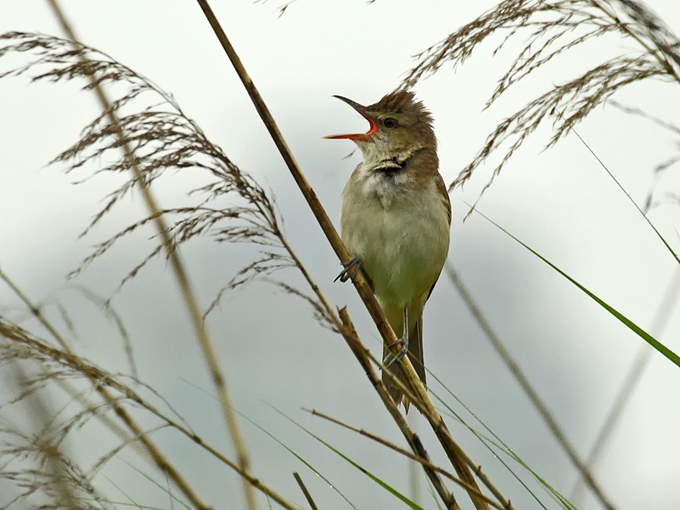
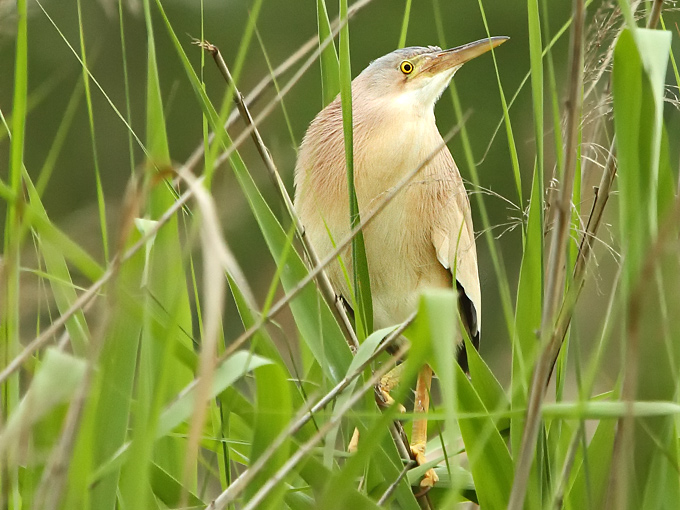
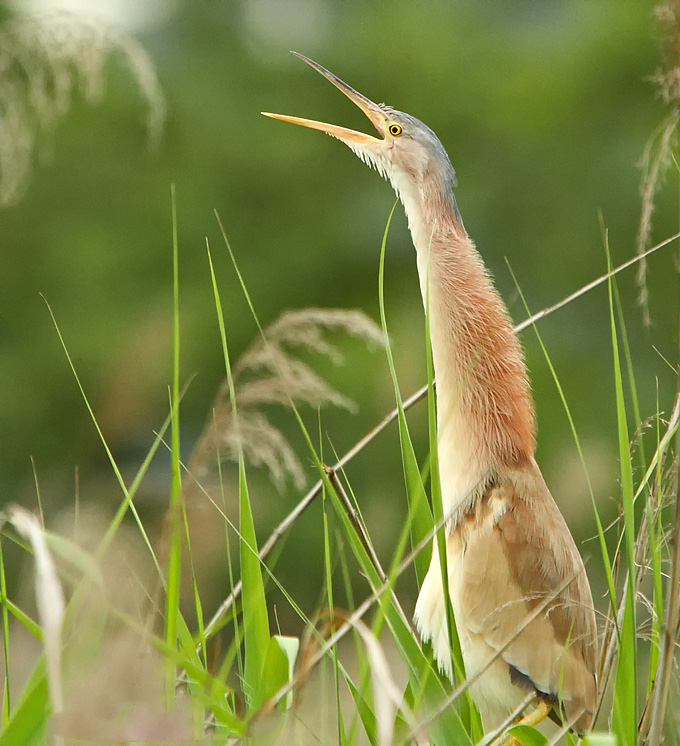
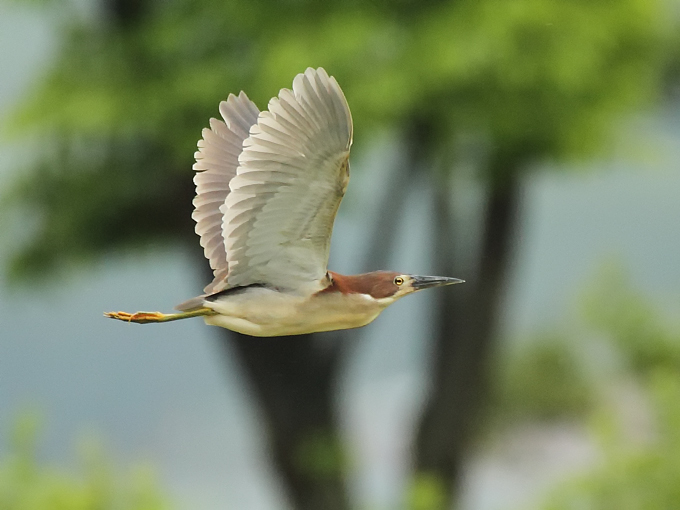
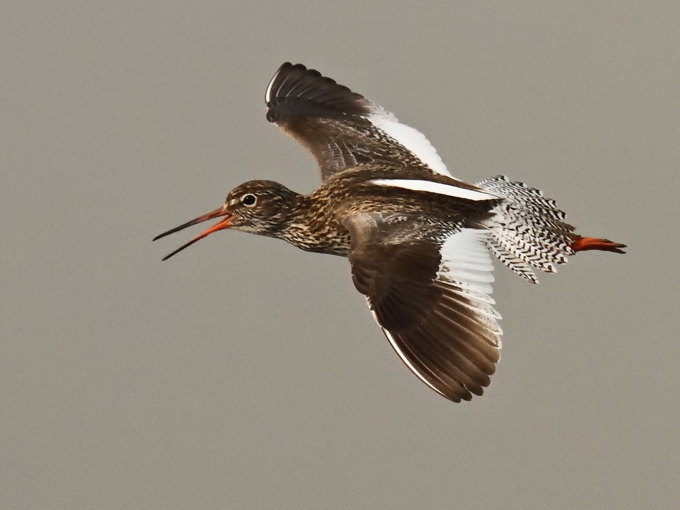
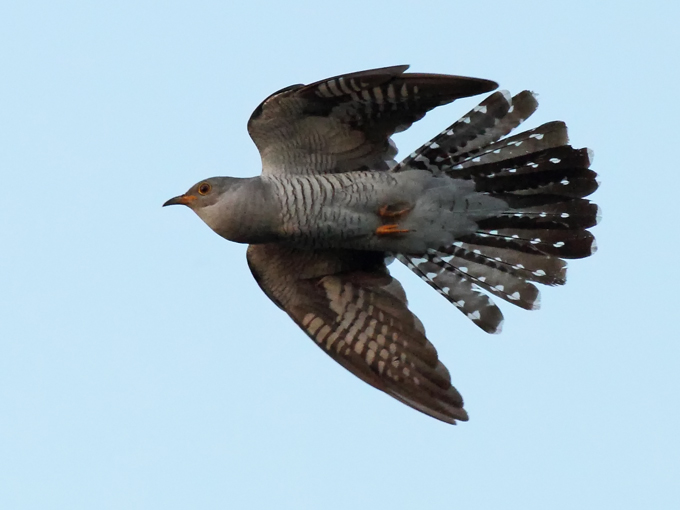
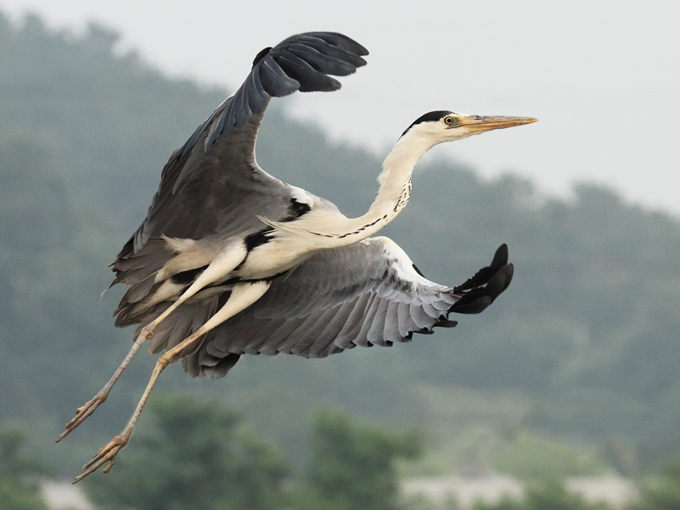
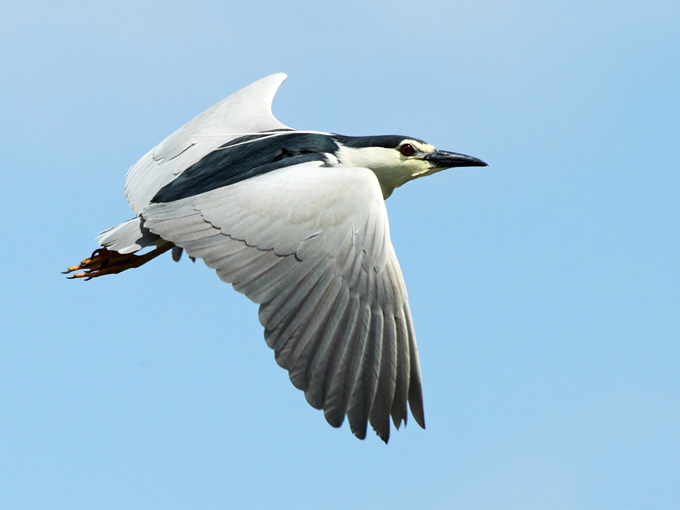
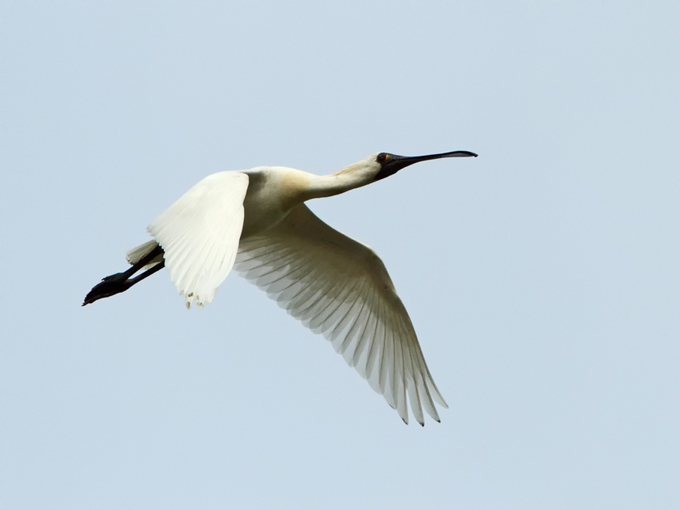
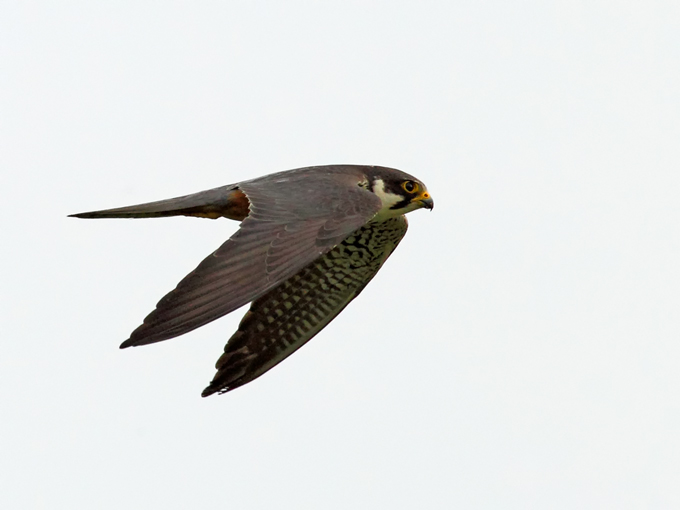
East Busan, July 9
A few hours in the field ahead of the first typhoon of the year to reach Kyushu (just across the Korean Strait) found little moving on the sea, with only c. 100 Black-tailed Gull “blogging” and 207 Streaked Shearwater counted in a single scan, most in two feeding rafts. In park and woodland, four families of Daurian Redstart, excellent views of White-backed Woodpecker and, finally, excellent views too of two Black Paradise Flycatcher – including a pair apparently food-carrying and mobbing passing Eurasian Jays.
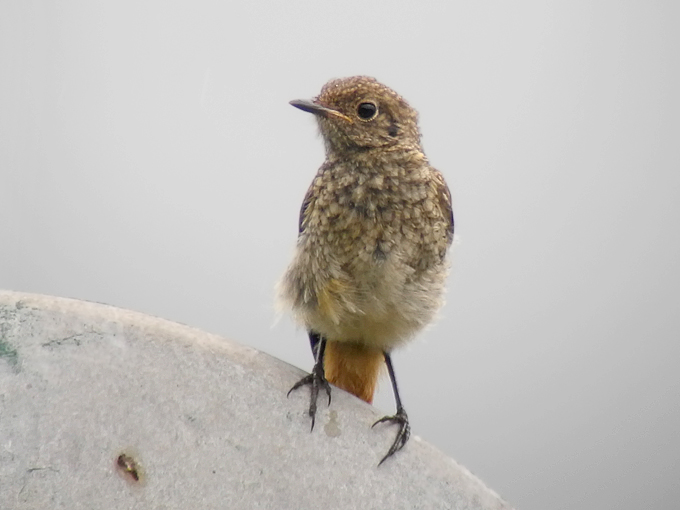
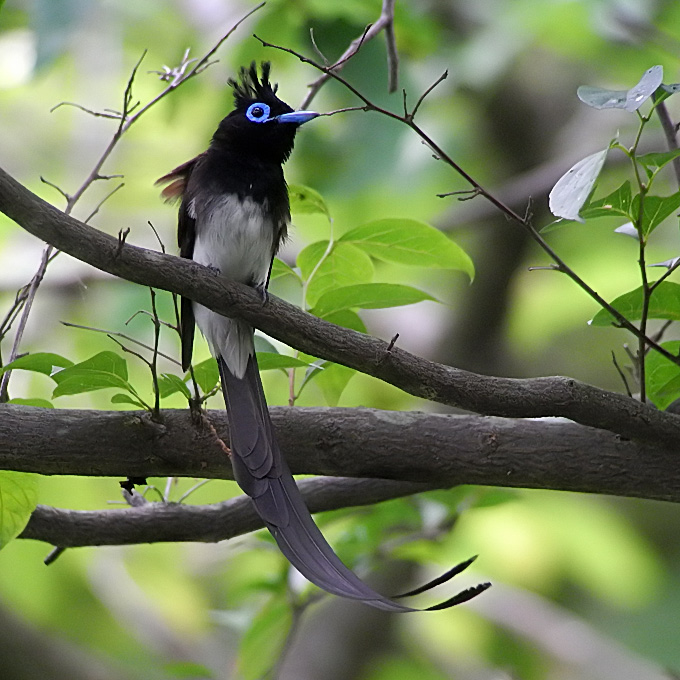
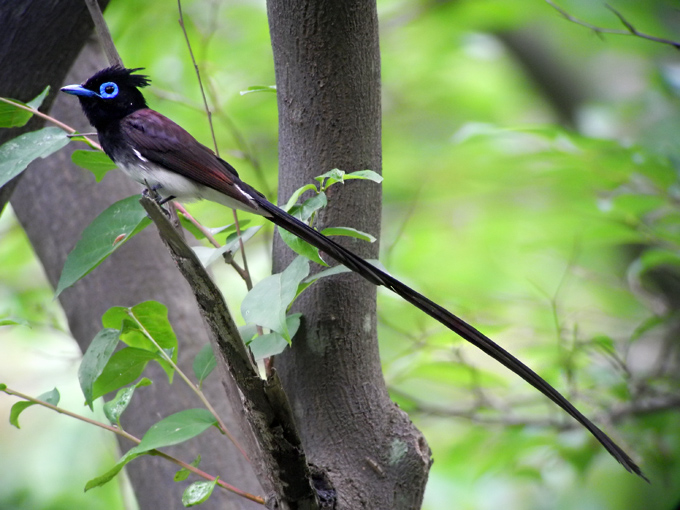
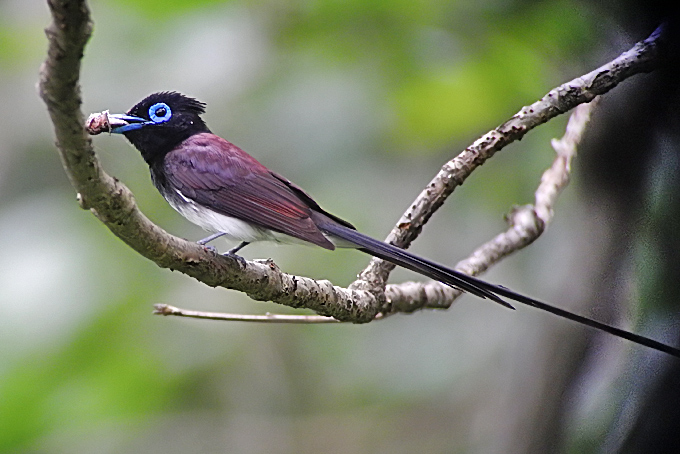
Nakdong Estuary, July 8
After hearing about the Tufted Puffin found at Gochang, and then reading about ENSO-related seabird news in the last few days, I wonder if the ROK is likely to experience any other remarkable seabird sightings in the near future.
Today after a long and heavy thunderstorm, the skies cleared quickly enough to allow for a check at the Nakdong Estuary before sunset. At Myeongji, species observed include Styan's Grasshopper Warbler, Oriental Reed Warbler, Far Eastern Cisticola, Grey-capped Greenfinch, several Barn Swallow (60+), a very distant Swan (likely a Whooper), several Eastern Spot-billed Duck (120+), and a distant calling Eurasian Curlew. After sunset, with just enough light, there was time to check one other favorite patch. Luckily I did. There was one bird in flight I couldn't make out. I watched it for a while and then saw it land nearby. A closer look revealed a personal first, Oriental Pratincole.
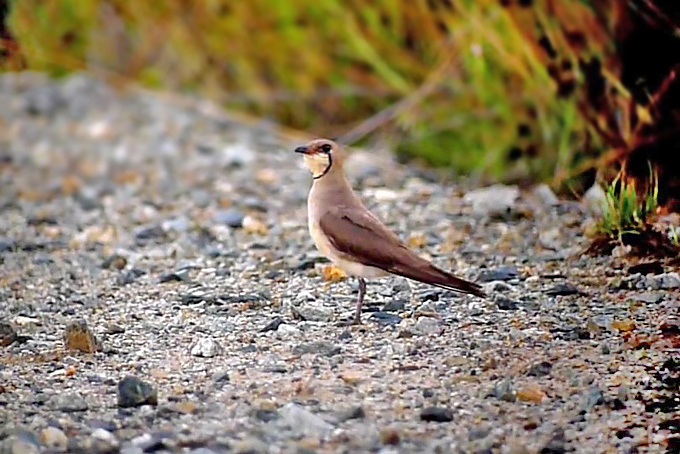
Muju, July 6
Despite a morning of continuous showers, we decided to visit Muju to check out some of its beautiful broad-leaf habitat. On our way, we crossed a bridge at the Namgang near Jinju and found a Western Osprey, making it the third I've seen in less than a month. We stopped and watched as the bird sat perched on a dead tree near the river's edge. Although several fish skipped around just feet away from it, the Osprey sat unmoved and unbothered. (Here's an interesting article about the Osprey by Prof. Robert Newlin at Gwangju News Online: Birds and Bewilderment.)
Moving on, we made our way to Muju. As we arrived, the rain began to fall more steadily. The most impressive of the few birds we were able to see were three Asian Brown Flycatchers, which included a juvenile. We heard Blue-and-white Flycatcher singing near the mountain stream and saw a few Marsh Tit, a few juvenile Varied Tit, and a Eurasian Nuthatch. There were two Pale Thrush observed and one Brown Dipper, which we were able to see towards the end of our walk.
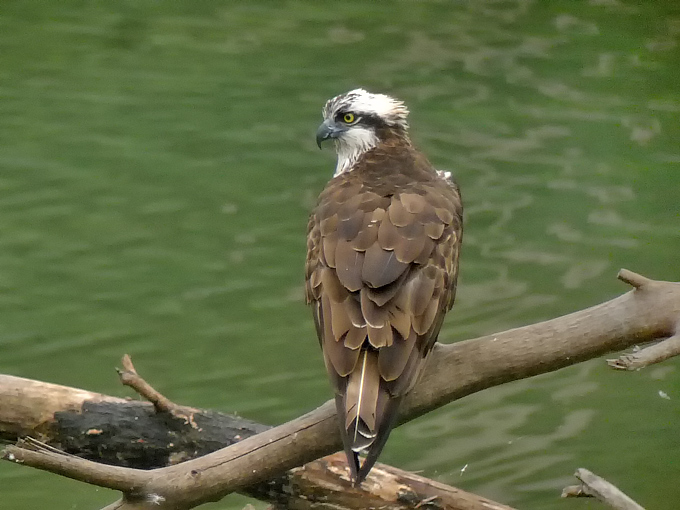
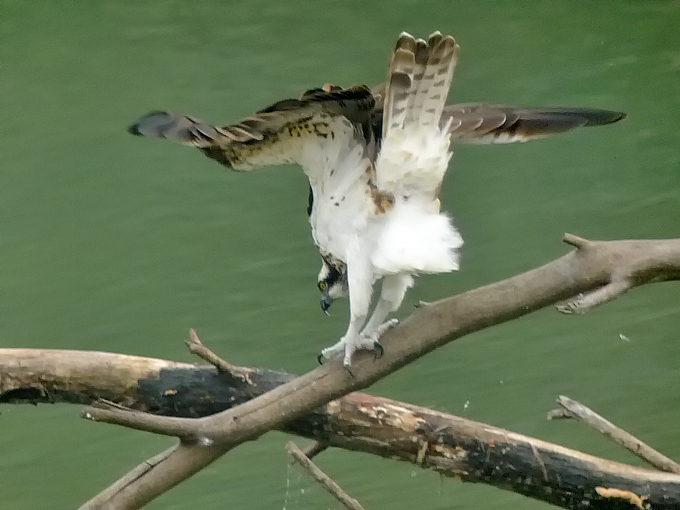
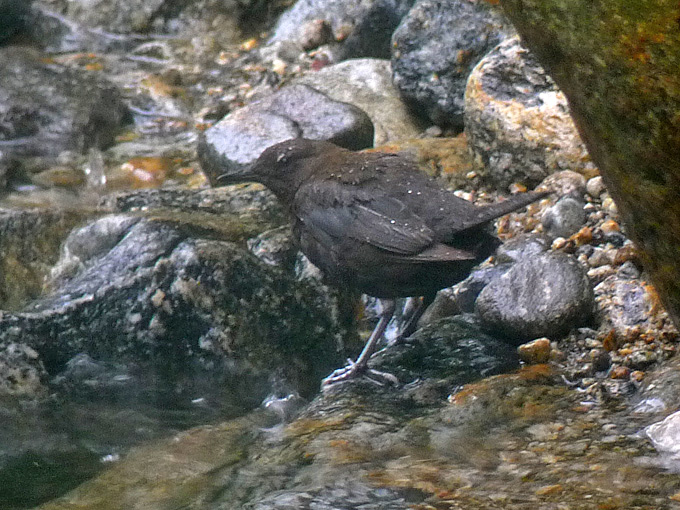
Junam Reservoir, July 5
We spent the afternoon watching birds at the main lake of Junam Reservoir on Saturday. The most numerous species observed was Eastern Spot-billed Duck, with 266+ on the lake. There were several Grey Heron, Great Egret, Intermediate Egret, Little Egret, and Cattle Egret, some on the lake and some in the rice fields. We scanned almost all of the nearby rice fields in hopes of finding a Watercock, but without any luck. Are there any records of Watercock at Junam? Barn Swallow were observed in flight and the constant ke-ke-bi song of Oriental Reed Warbler could be heard as we scanned through the lotus plants and water lilies.
Highlight of the afternoon might have been the well-showing Western Osprey diving for fish, that is until a closer look revealed a distant Pheasant-tailed Jacana in flight. After watching it land, we then decided to quickly move for better views from a different part of the lake. There we had slightly closer views, and to our surprise, found a second Jacana. We were more surprised to hear singing from one of the Jacanas and then shortly after that the two birds appeared to be mating. It was a short (10 seconds?) yet brilliant moment that I wish I had been able to see more closely. After some wing flapping, the bird on top then flew a short distance away and appeared to be feeding.
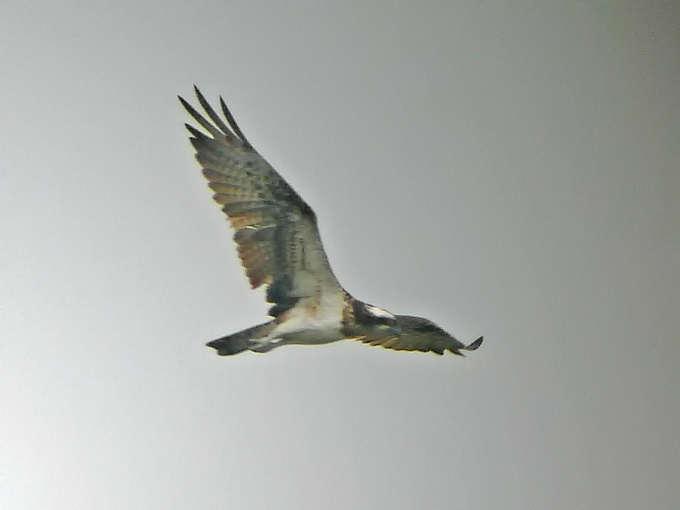
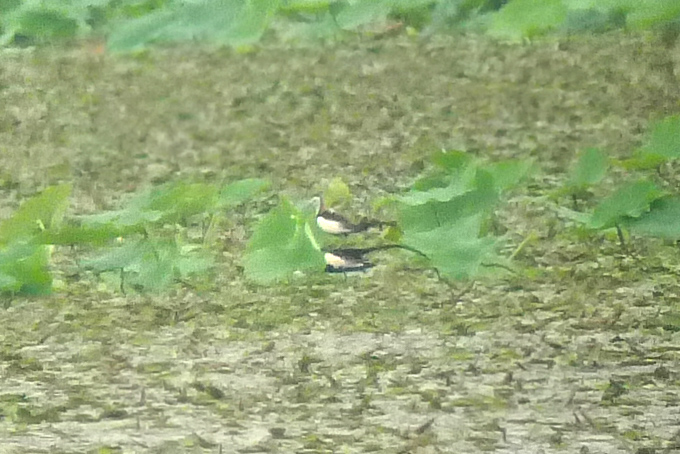
Anyangcheon, July 5
The anyang stream is another tributary of the Han river. The shallower upper reaches are bird-rich, having sandbars and reedy islands. The lower 4km has been heavily engineered with concrete banks and is virtually sterile.
From Doksan-dong to the stream-mouth at Yeomchang-dong (12km), the following seems noteworthy:
- Mallard Anas platyrhynchos. 34 in total, including yet another brood - of at least four well advanced juveniles, in virtually the exact same spot I noticed a family back in 2008. There are still less than ten known cases of breeding for the ROK.
- Northern Pintail Anas acuta. One male. There are apparently less than ten previous summer records.
- Common Merganser Mergus merganser. One eclipse male. This would seem to be the first July record outside of its rarely-documented breeding range in the far north.

